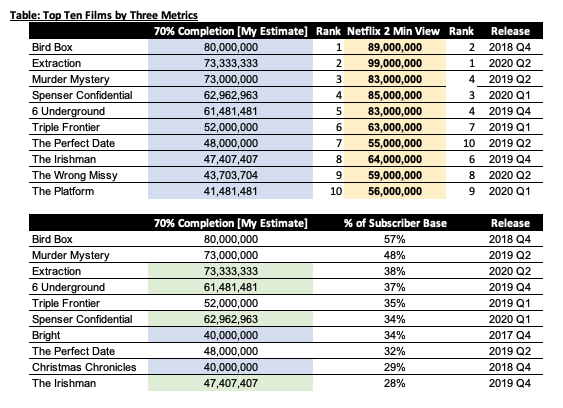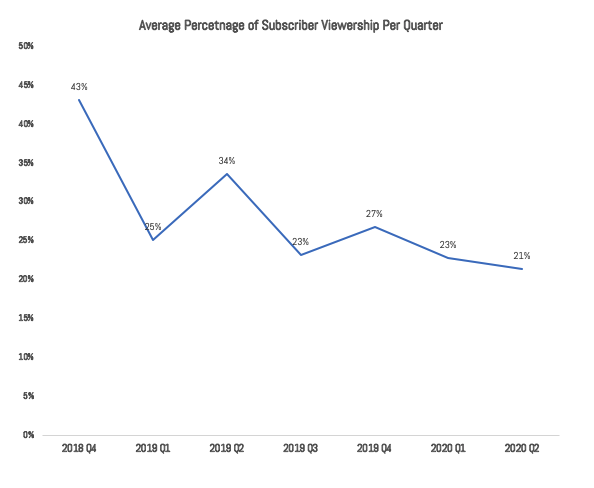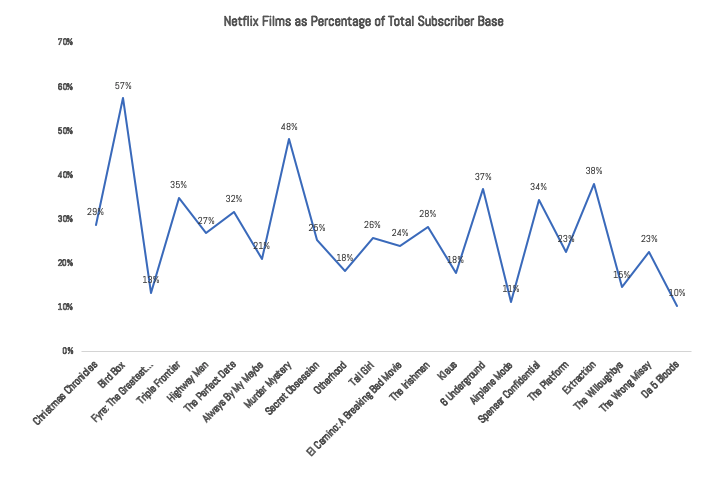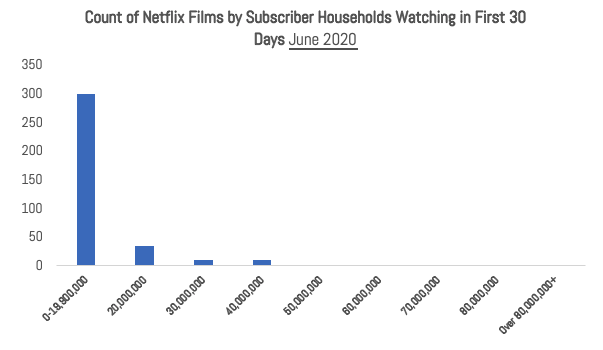A Thread on Netflix' Feature Film Performance
They obscure global numbers vs US, subscribers versus views and time period measured.
entertainmentstrategyguy.com/2018/12/04/int…
whats-on-netflix.com/news/every-vie…
bloomberg.com/news/articles/…
So the plan is to analyze that top ten list and the recent earnings report for every nugget I can find.
Where- I’m using GLOBAL data,
What- all converted to 70% completion of a feature film,
Who- counting subscribers.
When-The time period is from Q4-2018 (The Bird Box quarter)
…unless otherwise noted.
Insight 1 - Netflix films are drawing in progressively smaller audience as a percentage of the subscriber base, and it’s unclear if the total viewers of films is increasing over time.
entertainmentstrategyguy.com/2020/07/20/vis…
Still, it's unclear how many true blockbusters they have.
It's why I wish in addition to the average we always gave standard deviations and distributions.
Of the top ten, 10 are US
Top fifteen, 14 are US
Top 20, 19 are US or English language
Top 25, 23 are US or Eng
Unfortunately, US viewers tend not to go for foreign language originals. (British films/series are the exception.)
This is my most controversial opinion I write, but the data of the last year has only backed this up.
entertainmentstrategyguy.com/2018/09/12/the…
This is the secret insight of the Bloomberg Top Ten list: we know the top ten films which means every other film has to be below that
But we don’t.
But not Netflix.
$NFLX deliberately buys in bulk—361 films!!!—with the goal to see what works and use data to promote it. But they can’t use data proactively to develop films.
The Irishman is the only film who got a data point.
The silence on Roma, Marriage Story, Buster Scruggs, Mudbound, etc is deafening.
entertainmentstrategyguy.com/2018/12/06/did…
And since it didn’t make the top ten list, I feel justified in that estimate.
Hit me up with questions or comments.










